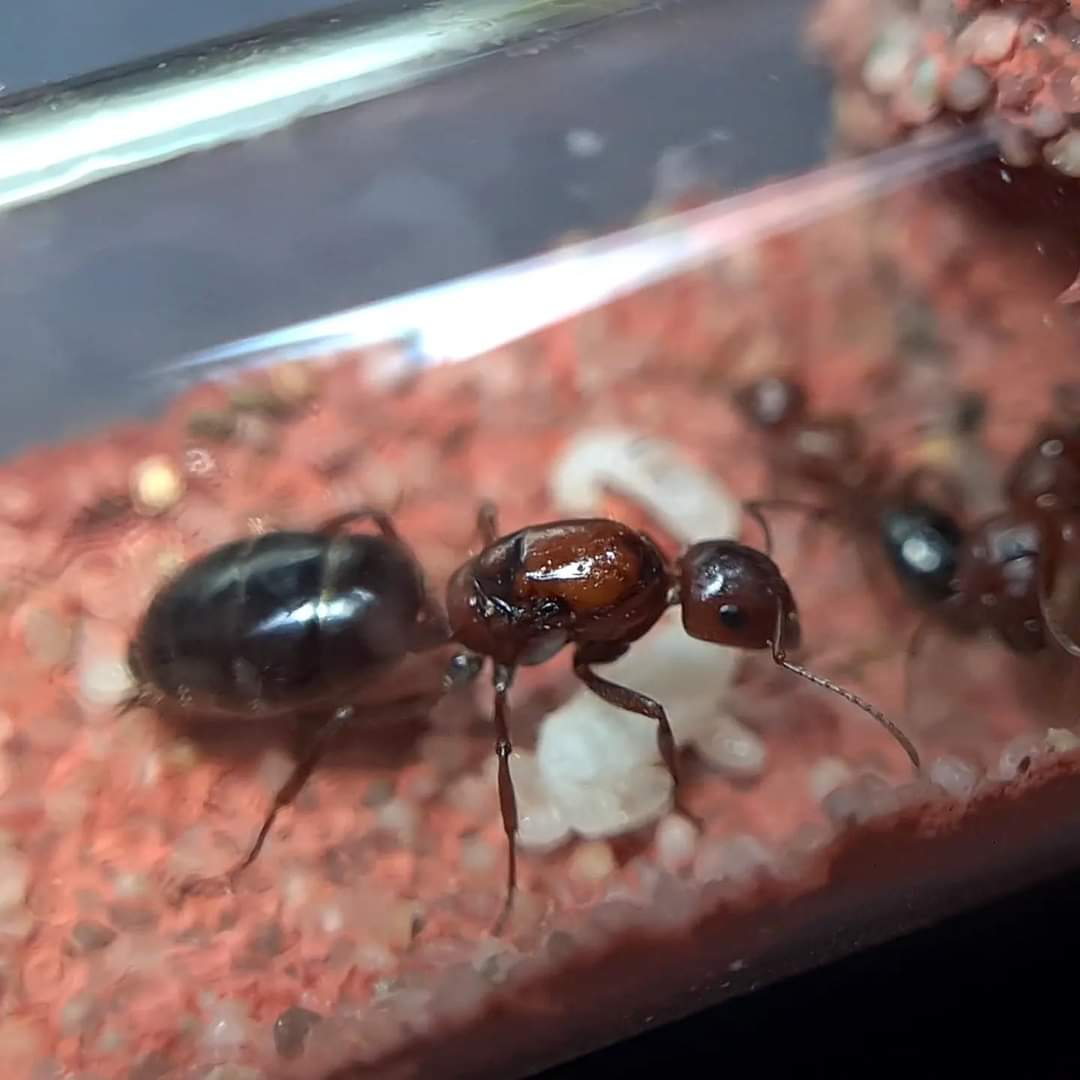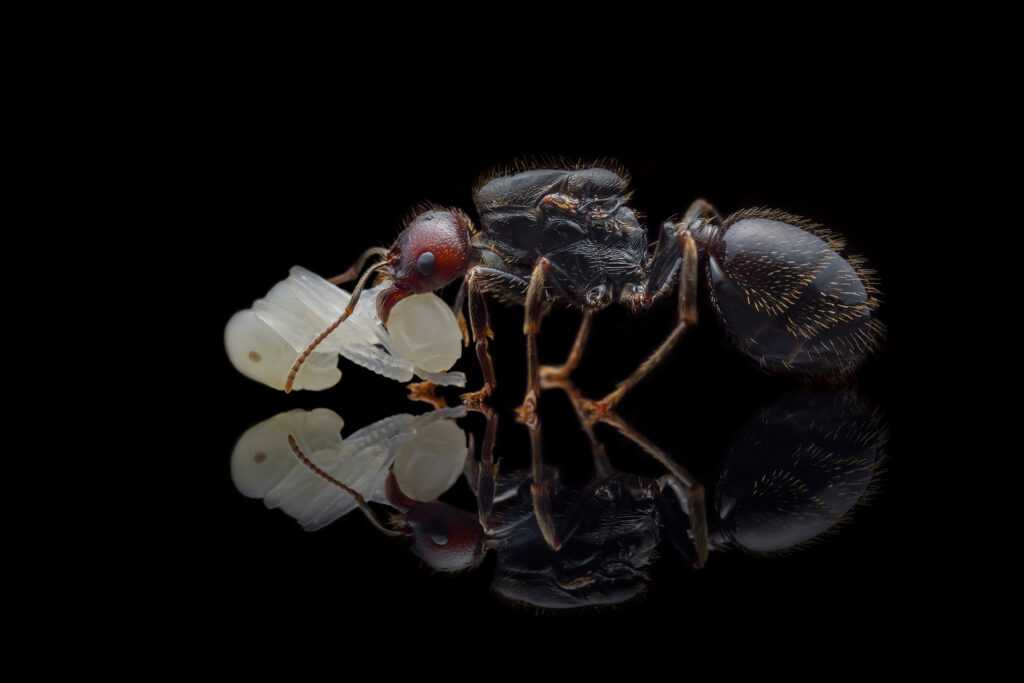Camponotus vanispinus: A Fascinating Species of Ant
Introduction
Camponotus vanispinus is a fascinating species of ant that belongs to the Camponotus genus. Native to Asia, these ants are known for their aggressive behavior. In this product description, we will explore the various aspects of Camponotus vanispinus, including their colony type, size, development rate, nutrition, and recommended nests for breeding.
Colony
Camponotus vanispinus is a monogynous species, with each colony consisting of a single queen. The colony size can range from a few hundred to as many as 5,000 workers, making them an ideal choice for ant enthusiasts looking to observe a thriving and active ant colony.
Size
The size of Camponotus vanispinus ants varies among different castes within the colony:
- Queen: The queen ant is the largest member of the colony, measuring between 12 and 13 mm in length.
- Workers: The workers are smaller, ranging from 4 to 8 mm in length.
- Major Workers: Some ants within the colony may take on the role of major workers, which are larger, measuring between 8 and 11 mm.
Camponotus vanispinus ants have a distinct coloration, with predominantly red bodies and black abdomens. This unique color combination makes them visually striking and an interesting addition to any ant colony collection.
Nutrition
In order to keep a Camponotus vanispinus colony healthy and thriving, it is important to provide them with a varied and nutritious diet. Here are some recommended food sources:
- Food Insects: Camponotus vanispinus ants feed on insects such as cockroaches and crickets. These can be provided as live or pre-killed food sources to the ants.
- Syrup: A syrup made from a mixture of water and honey can also be offered to the ants. The recommended ratio is 4 parts water to 1 part honey.
- Fruits and Vegetables: Offering a selection of fresh fruits and vegetables can provide the ants with additional nutrition. They can enjoy a variety of options such as apples, grapes, carrots, and leafy greens.
- Jelly: Another option for the ants’ diet is jelly. This sweet treat can be provided in small amounts as a special treat for the colony.
- Cooked Chicken: Cooked chicken without salt can also be offered to the ants as a source of protein. This should be given sparingly and in small pieces.
By providing a diverse diet, you can ensure that the Camponotus vanispinus ants receive all the necessary nutrients to maintain their health and well-being.
Habitat Requirements
Creating a suitable environment for Camponotus vanispinus ants is crucial for their overall success. Here are the recommended humidity and temperature ranges:
- Arena Humidity: The humidity in the arena, where the ants will primarily forage, should be maintained between 30% and 50%.
- Nest Humidity: Within the nests, the humidity should be kept between 50% and 60%. This can be achieved by providing a moisture-retaining substrate such as sponge or cotton.
- Arena Temperature: The temperature in the arena should be maintained between 18°C and 28°C to ensure the ants remain comfortable.
- Nest Temperature: Within the nests, the temperature should be kept between 21°C and 24°C. This can be achieved by placing the nests in a temperature-controlled environment.
By providing the appropriate humidity and temperature conditions, you can create a suitable habitat for the Camponotus vanispinus ants, allowing them to thrive and exhibit their natural behaviors.
Recommended Nests
When it comes to housing Camponotus vanispinus ants, there are several options to choose from. Here are some recommended nest materials:
- Acrylic: Acrylic nests are a popular choice among ant keepers due to their transparency and ease of maintenance. These nests provide a clear view of the ants’ activities and can be easily cleaned.
- Cork: Cork nests provide a natural and aesthetically pleasing environment for the ants. They offer good insulation and are relatively easy to maintain.
- Gypsum: Gypsum nests are known for their excellent moisture retention properties. They provide a stable and humid environment for the ants.
- Aerated Concrete: Nests made from aerated concrete offer good insulation and moisture regulation. They provide a secure and comfortable home for the ants.
- Wooden: Wooden nests are a classic choice for ant keepers. They are visually appealing and can be easily customized to suit the needs of the ants.
When selecting a nest for your Camponotus vanispinus ants, it is important to consider their specific requirements and choose a nest that provides adequate space and ventilation.
Conclusion
Camponotus vanispinus ants are a fascinating species that offer ant enthusiasts a unique opportunity to observe their aggressive behavior and thriving colonies. By providing the appropriate habitat, nutrition, and nest options, you can ensure the health and well-being of these captivating ants. Consider adding Camponotus vanispinus to your ant collection and embark on an exciting journey of ant keeping.





















Reviews
There are no reviews yet.